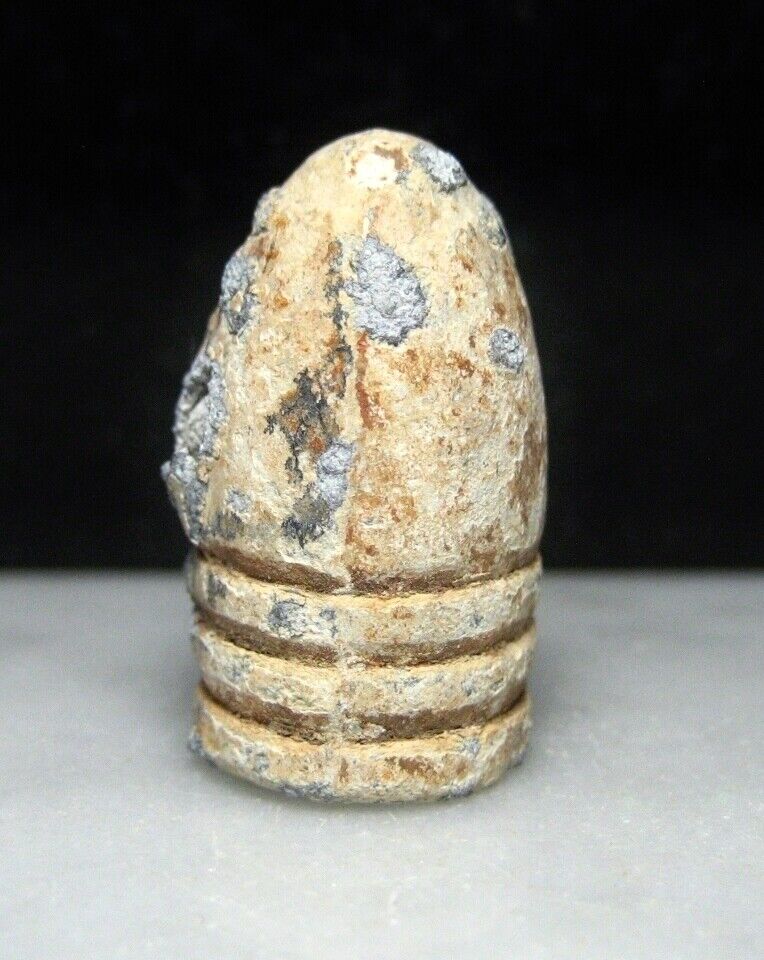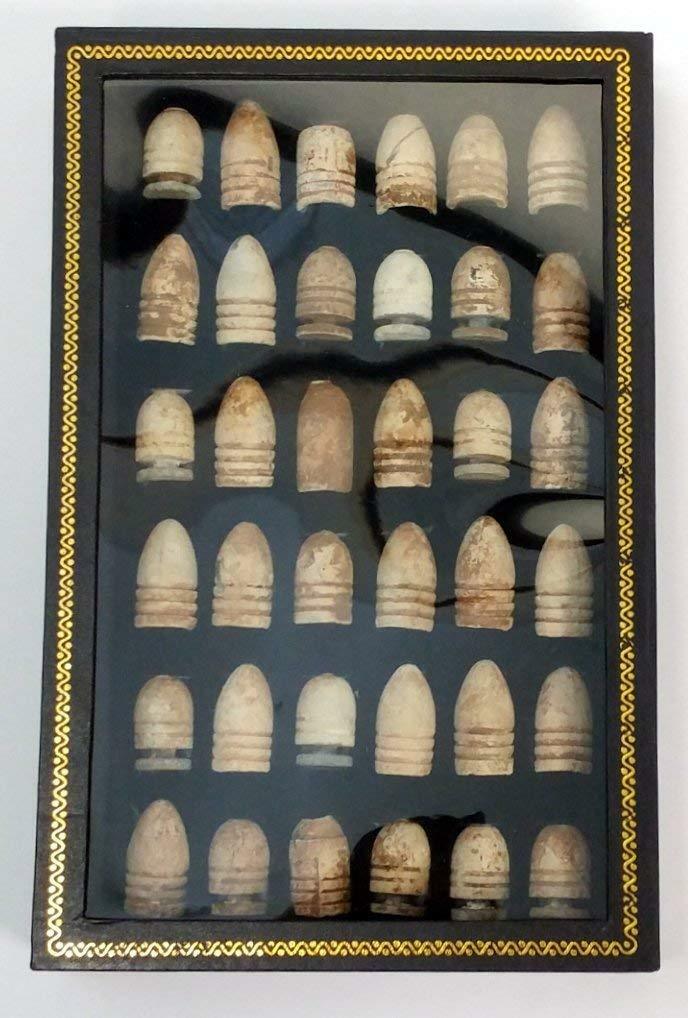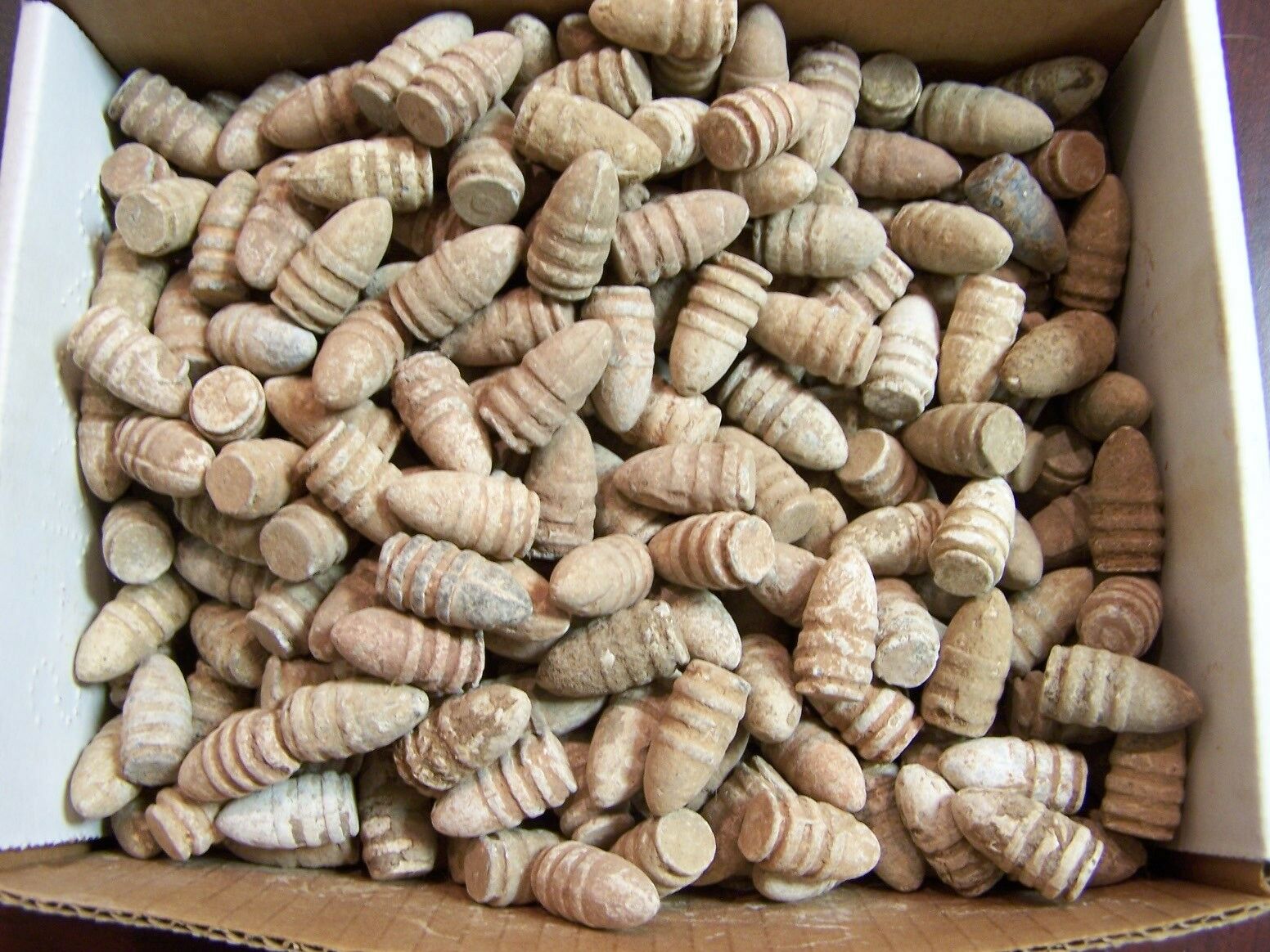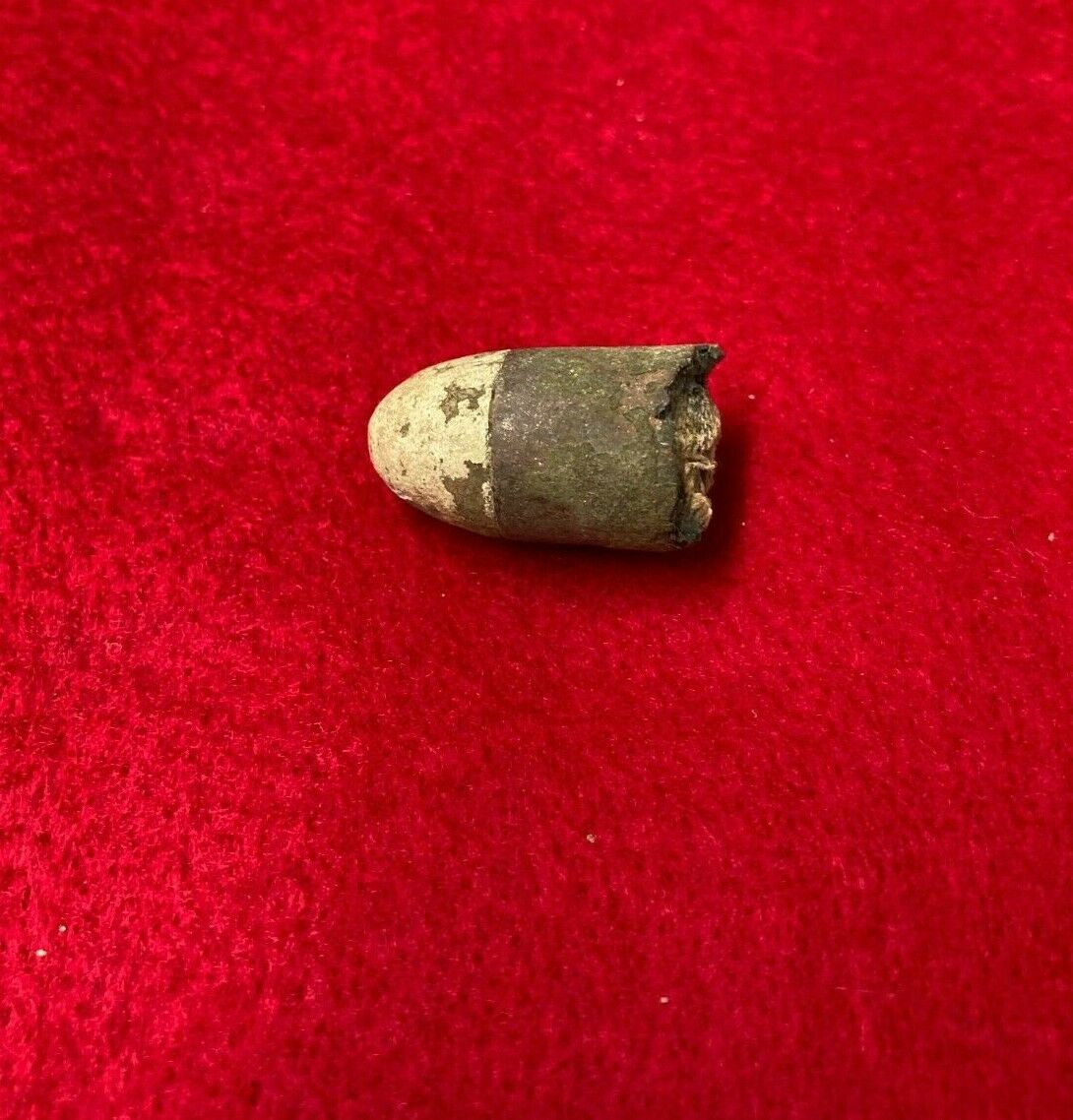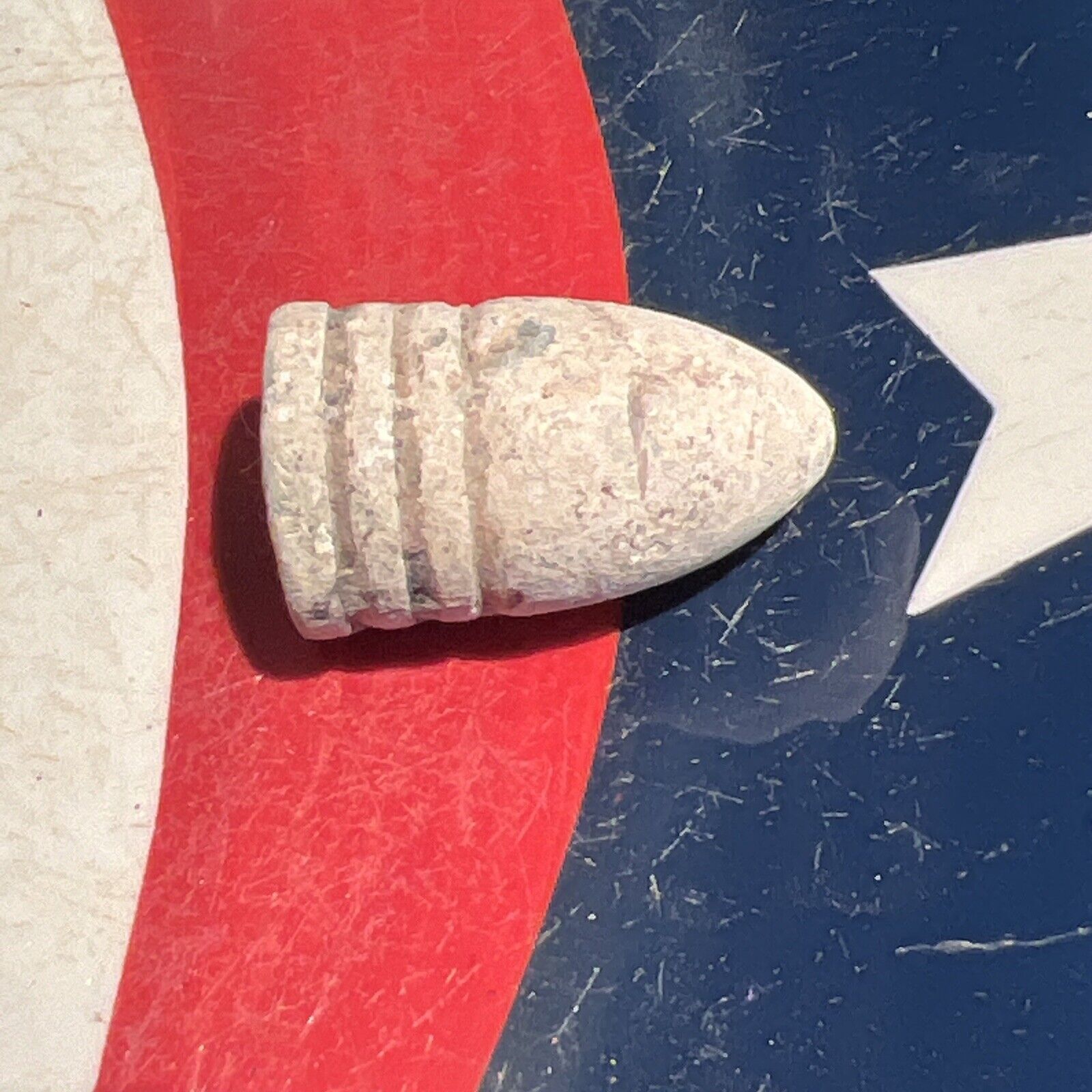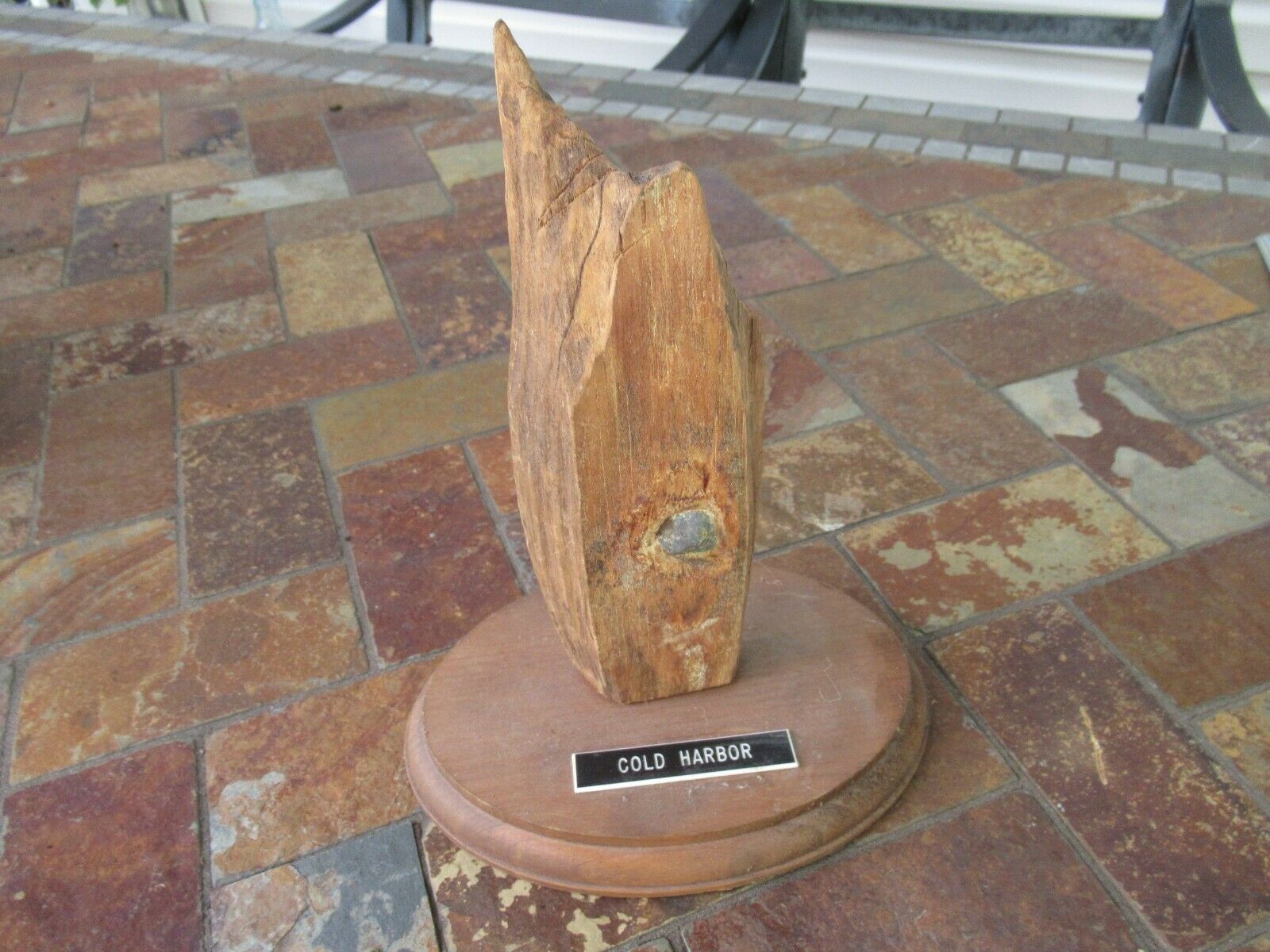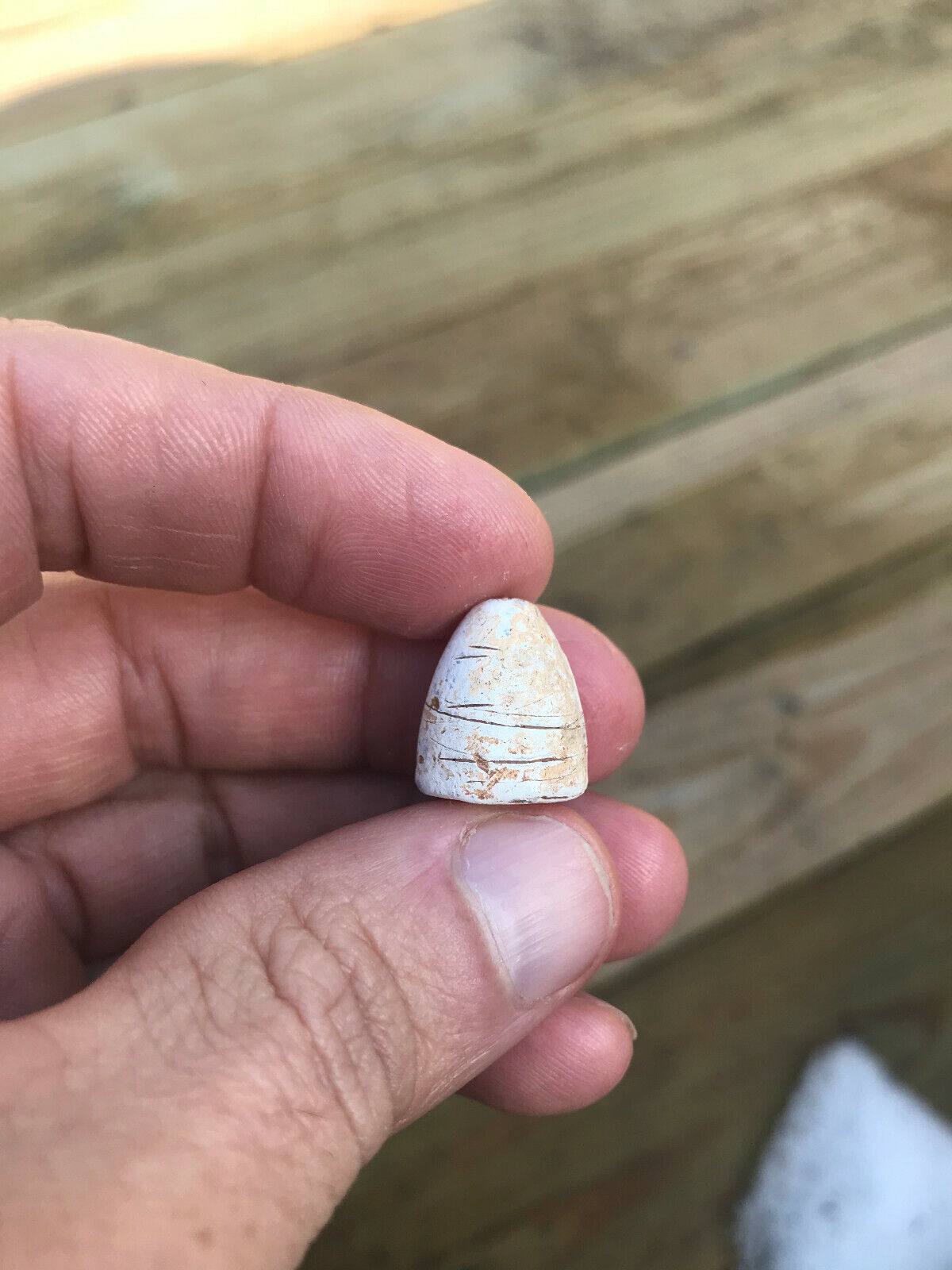-40%
Fort Harrison Richmond VA Civil War Relic Bullet Uncommon Site Found Bill Gavin
$ 13.19
- Description
- Size Guide
Description
We are working as partners in conjunction with Gettysburg Relics to offer some very nice American Civil War relics for sale. The owner of Gettysburg Relics was the proprietor of Artifact at 777 on Cemetery Hill in Gettysburg for a number of years, and we are now selling exclusively on eBay.A RELIC FROM A VERY UNCOMMON SITE - FORT HARRISON, RICHMOND, VIRGINIA - FROM THE BILL GAVIN COLLECTION - A very nice dropped side cast .577 Caliber 3-Ring Bullet (has some interesting corrosion, possibly from the powder or very wet ground)
- Part of the collection of the famous relic hunter Bill Gavin.
This artifact was recovered at the site of Fort Harrison, Richmond, Virginia
,
and was a part of the collection of the famous relic hunter Bill Gavin
.
Bill Gavin was the first relic hunter to use a metal detector to search for Civil War artifacts (back in the 1940s - the first location was Cold Harbor) and amassed a huge collection of items in the decades that followed. Gavin wrote four books, including the well-know "Accoutrement Plates North and South, 1861-1865" and several articles and was well respected for his knowledge in the field. He passed away in 2010. A provenance letter will be included with this relic.
'Fort Harrison, later renamed Fort Burnham, was an important component of the Confederate defenses of Richmond during the American Civil War. Named after Lieutenant William Harrison, a Confederate engineer, it was the largest in the series of fortifications that extended from New Market Road to the James River that also included Forts Brady, Hoke, Johnson, Gregg, and Gilmer. These earthworks were designed to protect the strategically important Chaffin's Bluff on the James.
On September 29, 1864, 2,500 Union soldiers from Major General Benjamin Butler's Army of the James overran Major Richard Cornelius Taylor's 200-man Confederate garrison and captured the fort in the Battle of Chaffin's Farm. Brigadier General Hiram Burnham, a native of Maine and a brigade commander in XVIII Corps, was killed in the assault, and the Union-held fort was renamed Fort Burnham in his honor.
Although the attacks of September 29 had succeeded in capturing only Fort Harrison, General Robert E. Lee saw the potential threat to Richmond and ordered a counterattack on September 30. The attack failed, but Brigadier General George J. Stannard lost an arm while resisting Lee's assault. This failure forced the Confederates to realign their defenses farther west. Fort Burnham remained in Union hands until the end of the war.
In 1930, members of the Richmond Parks Corporation, a local preservation society, constructed a log cabin on the site to serve as their headquarters. Today, this building serves as the Fort Harrison visitor center, part of Richmond National Battlefield Park.
On September 22, 2014, park staff at Richmond National Battlefield Park discovered an artillery shell within the moat of a Confederate fortification known as Fort Gilmer in the park's Fort Harrison battlefield unit. Although it did not explode, the shell was a 12-pound explosive round, possibly used by Confederates at Fort Gilmer as one of several improvised hand grenades rolled down the side of the fort against Union soldiers from the 7th United States Colored Troops.
Fort Harrison was key to General Butler's plan of attack. It represented the strongest point on the Confederate line of defenses. From it, one could see all the way to the James River. However, in 1864 most of the Confederate forces were in Petersburg and here the Confederate defenders numbered barely 200. Their guns were mostly so poor as to be scorned by the main field artillery. The Union attack pierced the fort quickly, with relatively few casualties. Had the Union attacks on the rest of the Confederate line succeeded as well as at New Market Heights and Fort Harrison, the overall military significance would have been greater.
On September 30, Robert E. Lee personally organized a major effort to recapture the lost fort. His attack also lacked coordination, and the well prepared Union defenders-some of them armed with multiple shot weapons crushed the Confederate effort and inflicted great loss on the attackers. The victors abolished the Confederate title for the fort and renamed it Fort Burnham after the Union general killed in the attack of September 29.'
All of the collections that we are offering for sale are guaranteed to be authentic, and are either older recoveries, found before the 1960s when it was still legal to metal detect battlefields, or were recovered on private property with permission. Some land on Battlefields that is now Federally owned, or owned by the Trust, was acquired after the items were recovered. We will not sell any items that were recovered illegally, nor will we sell any items that we suspect were recovered illegally.
We include as much documentation with the relics as we possess. This includes copies of tags if there are identification tags or maps, as well as a signed letter of provenance with the specific recovery information.
Thank you for viewing!
